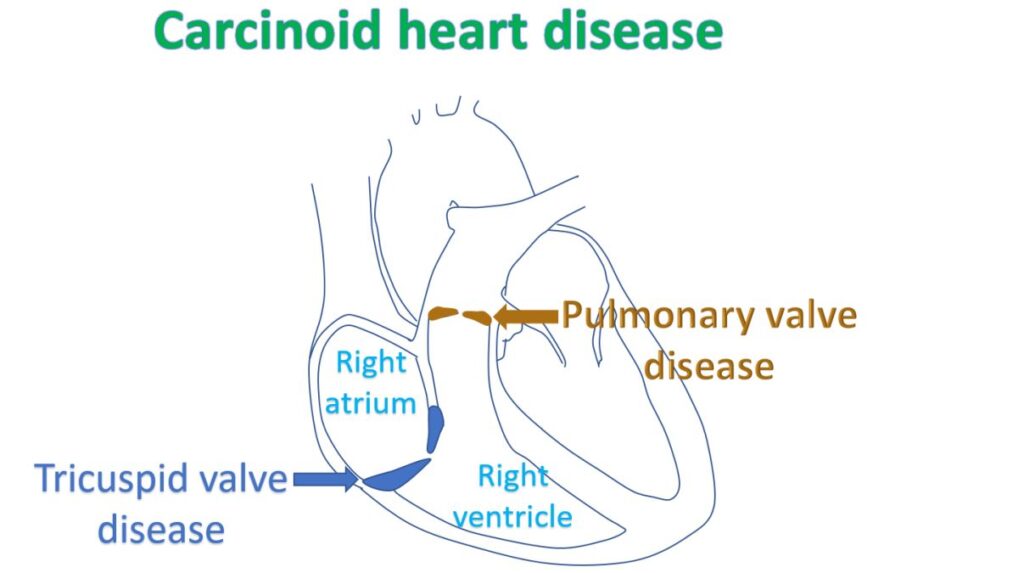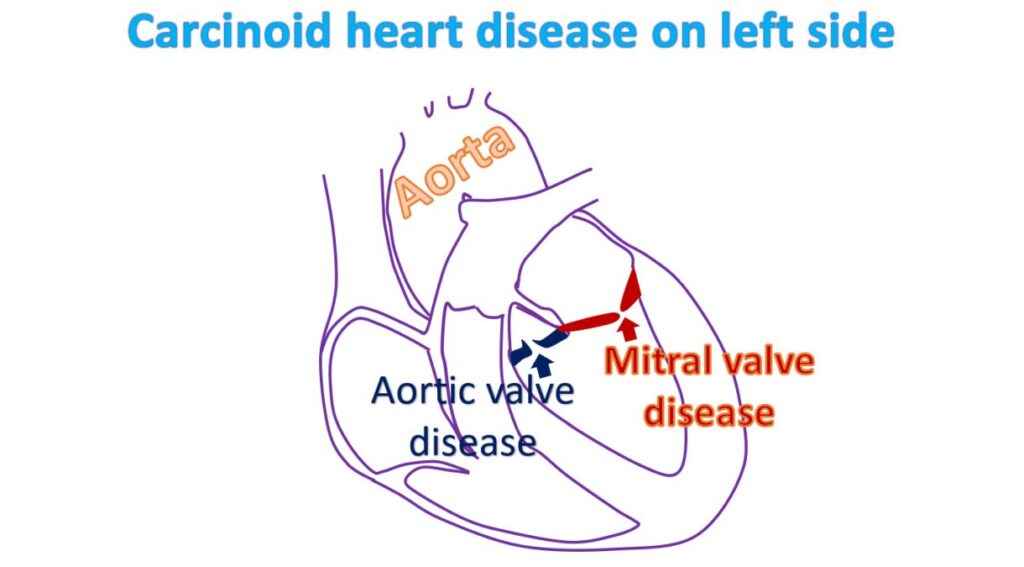What is carcinoid heart disease?
What is carcinoid heart disease?
Carcinoid heart disease occurs in a rare type of tumors known as carcinoid tumours. Carcinoid tumours are most often located in relation to the intestines. They can also sometimes occur in the lungs. Carcinoid tumours secrete certain chemicals which can damage the heart valves.

Heart is usually involved only when the tumour has spread to the liver from the intestines. This is because liver can inactivate smaller amounts of the abnormal substances like serotonin which are secreted by the tumor. When the liver is involved by the tumour, large amounts of the chemical secretions escape into the heart through blood.
As the chemicals reach the right side of the heart first, right sided heart valves, namely tricuspid and pulmonary valves are involved most often. Tricuspid valve is between the upper chamber (right atrium) and lower chamber (right ventricle). Pulmonary valve is between the right ventricle and the pulmonary artery which takes blood to the lungs for oxygenation.
When tumor has spread to the lungs, the chemicals can escape the clearance from the lungs which usually acts as the second filter after the liver. The chemicals reach the left side of the heart in such a situation and involve mitral and aortic valves, usually in less than 10% of cases. Mitral valve is between the left upper chamber (left atrium) and the left lower chamber (left ventricle). Aortic valve is between the left ventricle and aorta. Aorta is the large blood vessel which arises from the left ventricle, to carry oxygenated blood to the whole body.

Chemicals secreted by the carcinoid tumour into the blood can produce flushing, diarrhea and palpitation (undue awareness of heart beats). Watery diarrhea and cramps in the tummy are the usual symptoms associated. Purplish skin spots may be noted, especially on the nose and upper lip. The cardiac involvement in carcinoid may sometimes be asymptomatic. Progressive heart failure and loss of weight may occur later. Fluid may collect under skin of the legs and in the tummy in later stages.
Special tests used to detect carcinoid tumors are 5-hydroxyindoleacetic acid (5-HIAA) levels in urine and Chromogranin A in the blood. Echocardiogram (ultrasound study of the heart) documents the involvement and severity of heart valve disease.
Positron emission tomography (PET) scan using synthetic radiolabeled octreotide with 68Ga will localize the tumour. Carcinoid tumours take up octreotide and related molecules on their cell membrane helping in both diagnosis and treatment. Octreotide is a useful medication for treatment of symptoms produced by the chemicals secreted by the tumour. Operations to remove the tumor are important in the management of carcinoid heart disease. When heart valve disease is advanced, surgery for repair and replacement of the damaged valves may be needed. All these are in addition to the usual medications given for treatment of heart failure.



